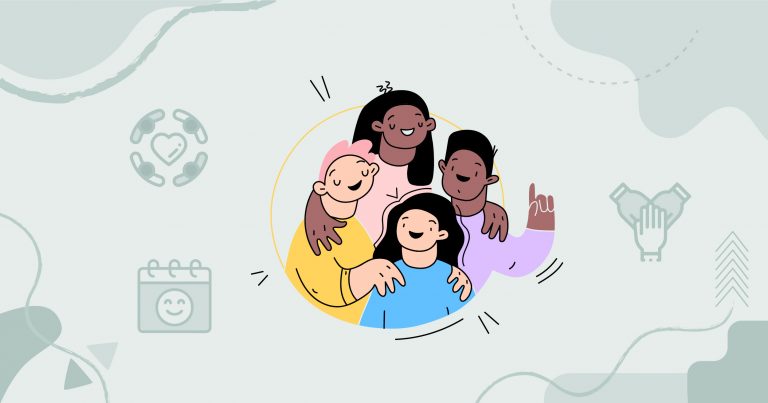The Evolving Tapestry of Friendships
“The Evolving Tapestry of Friendships” isn’t just a fancy way of saying people come and go in our lives. It’s about the deep and sometimes complicated changes our friendships undergo as we ride the roller coaster of life. Think back to your childhood friend who was practically glued to your side—your partner in crime in the sandbox. Fast forward a few years, and now you’re navigating the tricky waters of maintaining friendships while juggling job responsibilities, family duties, or even moving to a new city.
It’s a universal experience, isn’t it? One day, you’re planning weekend adventures with your college buddies, and the next, you’re trying to figure out when you all can even have a quick catch-up call amidst the chaos of different time zones and busy schedules. And let’s not forget the impact of changing personal interests. Maybe you’ve picked up a passion for hiking and outdoor activities while your old friend has embraced a more urban, artsy lifestyle.
As we age, this evolving dynamic can feel more acute. The friends who once knew every detail of your daily life might now only see the highlight reel on social media—or perhaps they’re not on your feed at all anymore. But it’s not just about drifting apart or growing closer; it’s about how these shifts reflect our personal growth and life choices. How do we keep the threads of these friendships from fraying? How do we weave new patterns that enrich our lives while honoring the past?
Navigating this tapestry requires a blend of effort, understanding, and sometimes, the courage to forge new paths with new companions who match the rhythm of our current lives. It’s about cherishing those long-standing friendships that can weather the storms and changes, and being open to forming new bonds that align with who we are now. The challenge—and the beauty—of this journey is in discovering that while not all friendships are meant to last forever, each one holds a unique place in the tapestry of our lives, contributing to the rich, colorful design of our personal history.
The Science of Bonds That Bind and Bend
Why do some friendships feel like they’re written in the stars to last forever, while others fade like a forgotten song? It turns out, the ebb and flow of friendships isn’t just social dynamics at play—it’s a dance choreographed by our brain chemistry.
At the heart of it all, our brains are built for bonding. Oxytocin, often dubbed the ‘cuddle hormone,’ is crucial here. It floods our system during positive social interactions, strengthening feelings of closeness and attachment. It’s like a neurological glue that keeps our social bonds tight.
But as the years roll by, our brain doesn’t just sit idle; it changes. Thanks to neuroplasticity—our brain’s ability to rewire itself—our social needs and capacities evolve. What does this mean for our friendships? Well, as our interests shift and our lives take on new directions, our brain rewires to adapt to these new realities. This can lead some friendships to naturally drift apart as they no longer align with our current life phase.
Adding another layer to this, life isn’t always a walk in the park. Stress from work, family obligations, and other pressures can siphon off the energy we once poured into friendships. When we’re stressed, the production of serotonin and dopamine—those chemicals that make socializing feel so good—can dip. Suddenly, keeping up with friends might start to feel like more of a chore than a joy. This isn’t just feeling tired; it’s a biochemical shift that makes us less likely to seek out and enjoy those social moments.In essence, while our friendships are deeply influenced by the social worlds we inhabit, they’re also significantly shaped by the invisible workings of our brains. Understanding this can give us insights into why some friends remain dear to us through every season of life, while others, though once cherished, might fade into fond memories, influenced by the natural and ever-changing landscape of our internal neurochemical environment.
Subscribe to newsletter
Get your Gut Health Starter Guide right now.
Elevate your Tuesdays with practical, science-backed wisdom propelling you forward on your gut health journey.

Tips to Weave Strong Social Threads
- Prioritize and Categorize: Recognize which friendships provide mutual support and growth. Prioritize maintaining these relationships regardless of life changes.
- Regular Check-Ins: Establish a routine for reaching out to friends. This could be through scheduled calls, messages, or emails, ensuring that even the busiest days have moments for connection.
- Flexible Interactions: Adapt the ways you spend time together to fit current lifestyles. This might mean opting for a video call while walking, lunch during a workday, or a family-friendly gathering instead of a late-night outing.
- Shared Experiences: Continuously build new memories by trying new activities together, which can reinvigorate relationships and create new points of connection.
- Open Communication: Be honest about your life changes and how they affect your capacity to engage. Transparency can prevent misunderstandings and strengthen bonds.
Renewed Connections
Consider the journey of Lisa, a 45-year-old architect, who noticed the once vibrant threads connecting her to her college friends had thinned over the years. “In college, we were inseparable, but life just pulled us in different directions. We settled in various cities, started families, and the only glimpses we got into each other’s lives were through the annual holiday cards,” Lisa recounts.
Eager to bridge the growing gap, Lisa proposed an idea—why not start a monthly virtual book club? “It seemed like the perfect solution given everyone’s hectic schedules, and to my delight, they all jumped at it,” she explains. What started as a structured discussion about books quickly blossomed into much more. “Our sessions became these wonderful windows into each other’s lives. We weren’t just talking about books anymore; we were sharing life experiences, challenges, and personal victories.”
This reconnection brought them closer than they had been in years, forging new bonds that complemented their shared history. “It’s not just about trying to recapture our past closeness but about nurturing our friendship in ways that fit who we are now,” Lisa reflects.


















